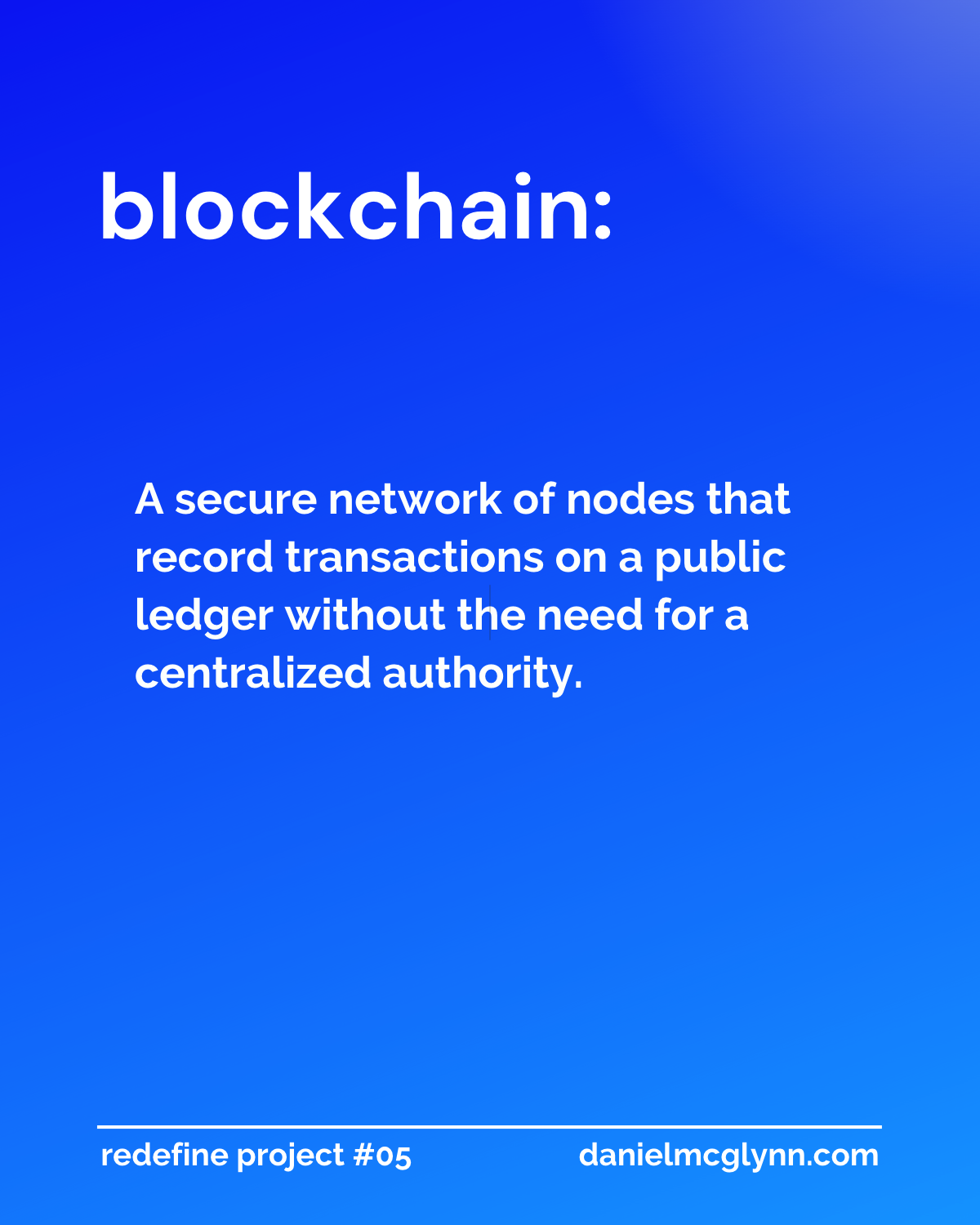A blockchain is a kind of computing network that is designed to act like an accessible ledger.
The network is composed of nodes that confirm (or validate) transactions on the network — or nodes that hold a copy of the entire ledger.
The value of a blockchain as public infrastructure is that it is permissionless (meaning anyone can participate) and when mature and properly secured, it is immutable (meaning it can’t be edited).

A blockchain is named after the way it functions. Blocks of data are confirmed by network nodes and then added to a “chain” of other confirmed transactions at regular intervals. As more blocks of transactions are confirmed the blockchain becomes more secure because it would require a hacker or attacker to use more computing power to undo the transaction record.
This method of collecting and confirming data, while inefficient compared to traditional, more centralized databases, offers some advantages or alternatives.
A blockchain is accessible and auditable. A public blockchain, like Bitcoin and Ethereum, the two largest chains by market capitalization, don’t belong to any government or corporation, which makes them apolitical and anti-monopolistic, which is counter to today’s dominant power structures.
Instead of centralized command and control, blockchains rely on native tokens or currencies for governance and as a means to encourage the upkeep of the network. The innovative part of blockchains is that they enable a new kind of human coordination and cooperation at internet scale.
Unlike most traditional databases, blockchains are designed to be digitally-native networks with monetization and growth mechanisms (the tokens and currencies) built in. The networks can scale with use and will become irrelevant without active participation.
Lastly, blockchain-based databases allow users to own and control their data through public key cryptography. To hold data and assets on the blockchain, users create a non-custodial wallet, which allows them to hold a private key (so only the private key holder can access the wallet) and public key which can be shared to engage in transactions.
The future of the internet, and the ability to create and control a non-custodial wallet, will likely be central to how people interact with digital apps and services that require data sharing or password management.